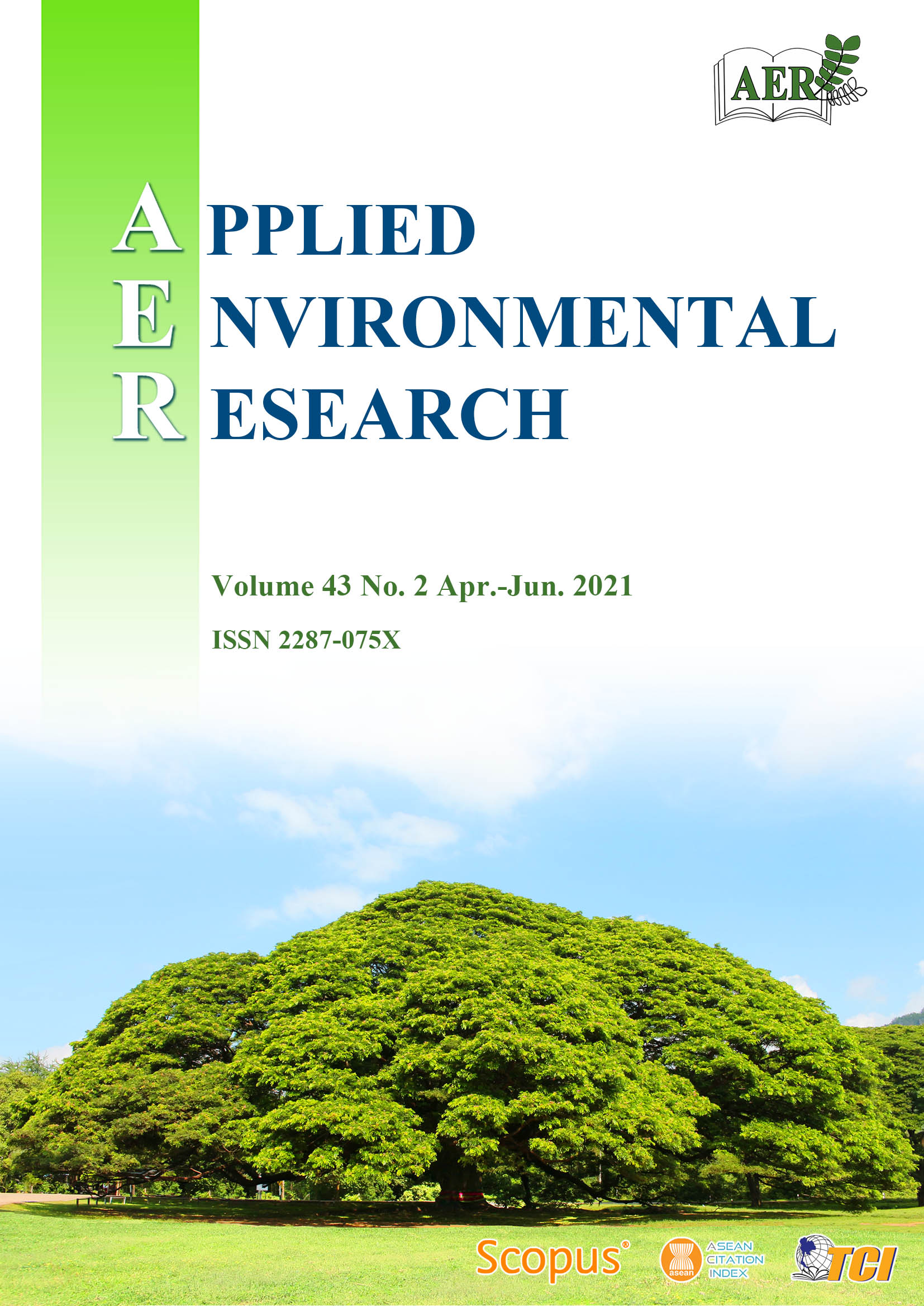Source and Distribution of Polycyclic Aromatic Hydrocarbons (PAHs) in Surface Sediment from Chalong Bay, Phuket, Thailand
Main Article Content
Abstract
This study aimed to investigate the spatial distribution and apportionment of potential sources of the 16 US-EPA priority PAHs in surface sediments of Chalong Bay, Phuket, Thailand. A total 28 of sediment samples were collected from areas with high maritime activity in Chalong Bay, subjected to conventional high recovery Soxhlet extraction, purified with SiO2 column chromatography, and quantified by Gas Chromatography-Mass Spectrometry (GC/MS). Total concentration of PAHs (Σ16PAHs) ranged from 31.15 to 1696 ng g−1 dry weight, with an average of 198.2 ± 318.5 ng g−1 dry weight. Binary diagnostic ratios plots were used to distinguish between petrogenic and pyrogenic sources. Most of the PAHs in sediments originated from pyrolytic sources. PCA analysis explained 82.3 % of the variance by only 4 predominant components. The first principal component (PC1) (26.7 %) was mainly contributed to urban street runoff and municipal wastewater discharge. PC2 (25.8 %) represented vehicular combustion sources, PC3 (19.1 %) was attributed to petrogenic sources, and PC4 (10.7 %) was only associated with Naphthalene. The sources of PAHs distributed around Chalong Bay included oil spills, combustion of fossil fuels by shipping, urban street runoff, and municipal wastewater discharge. Each type of sources affected different locations along shores of Chalong Bay.
Article Details

This work is licensed under a Creative Commons Attribution-NonCommercial 4.0 International License.
Published articles are under the copyright of the Applied Environmental Research effective when the article is accepted for publication thus granting Applied Environmental Research all rights for the work so that both parties may be protected from the consequences of unauthorized use. Partially or totally publication of an article elsewhere is possible only after the consent from the editors.

